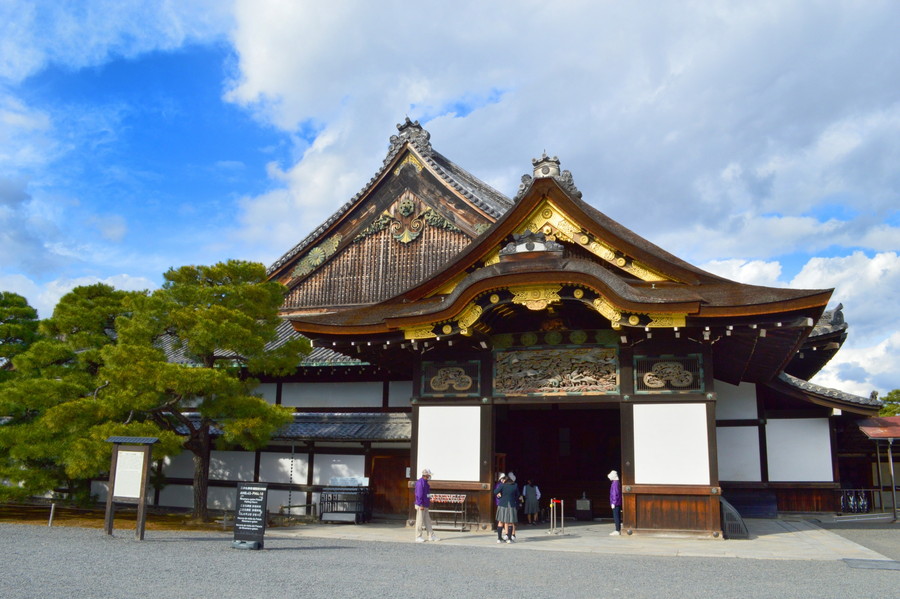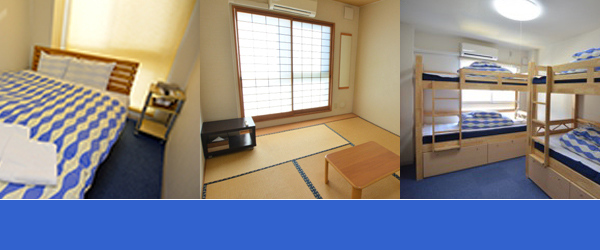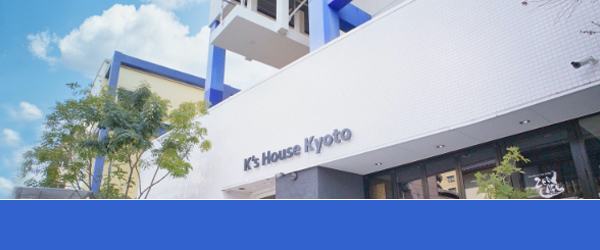We would like to introduce a model course for sightseeing in Kyoto designed by our staff
living in Kyoto.
The model courses to be introduced from now on were created assuming one-day
sightseeing for each course. I hope that it will be useful for sightseeing in Kyoto.
*Transportation and other conditions are subject to change depending on the season or the other factors. We recommend that you check the official websites of each facility and transportation system before visiting.
Higashiyama (East area) course
Kyoto sta.→Kiyomizu Temple→Gion Area・Yasaka Shrine→Heian Shrine・Nanzenji Temple→Sliver Temple






■Kyoto sta.→Kiyomizu Temple
Take City Bus No. 206 or 86 from Kyoto Station Bus Terminal and get off at Gojo-zaka bus stop.

Kiyomizu temple is a well-known temple, and if you walk up the slope to the east from the Gojo-zaka bus stop, you will reach Kiyomizu-dera at the top in about 15 minutes. There are many souvenir shops, restaurants, and Kiyomizu-yaki shops on the way, so you can enjoy a stroll.
If you stay at Kiyomizudera for about an hour, you can also visit Jishu Shrine, which is famous for fulfilling love.

En-musubi-no-kami-sama(Gods of love and relationships)
※Jishu Jinja Shrine is closed due to renovation work.
Official Site: Jishu Jinja Official Site
■Kiyomizu Temple→Yasaka Shrine→Gion Area
We recommend walking from Kiyomizu Temple to Yasaka Shrine. If you don’t make any detours, you can get there in about 30 minutes.

On the way, it would be nice to pass Sanneizaka and Ninenzaka and visit Yasaka Pagoda and Kodaiji Temple.
Personally, I recommend the garden of Entoku-in on Nene no Michi.Please stop by if you have time.
After passing Nene no Michi, you will come to Maruyama Park. Take a walk around Maruyama Park and head to Yasaka Shrine.

If you go west from Yasaka Shrine on Shijo Dori, you will be in the Gion area.

The main street is called Hanamikoji, but we recommend strolling through the back alleys.
Shirakawa’s Tatsuhashi Bridge, which is often used for filming dramas, and the townscape along the Shirakawa River are also beautiful.
■Gion Area→Heian Shirne・Nanzenji Temple
You can go from Gion to Heian Shrine by city bus No. 86.
Get off at the Okazaki Park Art Museum Heian Jingumae bus stop. There is a large park around Heian shrine where you can take a leisurely stroll or take a break.

If you walk to Keage area, cherry blossoms will be in full bloom in spring.
After walking around the Heian shirne area, we recommend going to Nanzenji on foot.

Nanzenji Temple is a famous filming location in Kyoto and has been used in many dramas.
The ruins of the former Lake Biwa Canal, which still remains in the precincts, are very unique.
■Heian Shrine → Sliver Temple

You can go from Heian Shrine to Sliver temple by city bus No. 5. Take bus No.5 and get off at Ginkakuji-michi.
During the cherry blossom season, we recommend taking the Philosopher’s Walk to Sliver temple.


However, it takes about 2 hours.
Sliver temple is personally the best garden. The approach to the entrance has an exciting
atmosphere, and I really like it.
After exploring the Sliver temple area, you can return to Kyoto Station by taking the city bus bound for Kyoto Station.
It takes about 45 minutes.
This course can be completed in one day.
However, if you want to take your time and go around, it is better to divide it into two days.
Please enjoy the Higashiyama area, which is full of famous sightseeing spots.
Nijo Castel, Kyoto Imperial Palace to North area course
Kyoto Sta. → Nijo Castel → Kyoto Imperial Palace → Kitano Tenmangu Shrine → Golden Temple → Ryoanji Temple





■Kyoto Sta. → Nijo Castel
You can go from Kyoto Station to Nijo Castle by City Bus No. 9. It takes about 20 minutes.
Nijo Castle is a very important place in Japanese history where the restoration of
government was carried out. The entrance fee is a little high at 1300 yen for adults, but the
Ninomaru Palace where the restoration of government was carried out and the vast garden
are worth seeing. is.
The Kyoto Imperial Palace, located in the center of Kyoto City, has a large park, and many
people use it not only for tourists but also for citizens as a place to relax.
We recommend visiting the Kyoto Imperial Palace for free. You can tour the gardens and
the historical buildings of the Imperial Palace.
■Nijo Castle → Kitano Tenmangu → Kinkakuji
Nijo Castle – Kitano Tenmangu can be reached by the same Kyoto City Bus No. 50.

Kitano Tenmangu Shrine, where Fujiwara no Michizane, who is famous as the god of learning, is enshrined, is also famous for its plum blossoms, and many people visit the plum garden during the plum blossom season.



Also, on the 25th of every month, the shrine is called “Tenjin-san,” and many stalls line the grounds, creating a festival-like atmosphere.
Also, on the 25th of every month, the shrine is called “Tenjin-san,” and many stalls line the grounds, creating a festival-like atmosphere.
In Kyoto, it is famous along with Toji’s Kobo market.
Kitano Tenmangu – Kinkakuji-temple can be reached by the same Kyoto City Bus No. 204
or 205.
I don’t think Kinkakuji needs to be explained anymore, but it’s a place you can’t miss when you come to Kyoto.

If you are lucky in winter, you can see Kinkakuji covered with snow.
After Kinkakuji, take the city bus No. 59 and aim for Ryoanji.

Ryoan-ji Temple is famous for its stone garden. There are 15 stones arranged in the stone garden, but it seems that you cannot see all 15 stones at the same time from any angle.
Please try it yourself.
Beyond Ryoan-ji Temple is Ninna-ji Temple, which is famous for its late cherry blossoms.
Fushimi Inari Shrine, Arashiyama course




■Kyoto Sta. → Inari Sta. by JR Nara line (Local train)
We recommend walking around Fushimi Inari in the morning and then walking around Arashiyama in the afternoon so you can take your time and look around.
This course can all be reached by JR.
Needless to say, Fushimi Inari is famous for its 1,000 torii gates (actually, there are about 5,000 torii gates.)



It is always crowded with tourists, but you can pass through the 1,000 torii gates and climb to the top of the mountain, then walk behind the mountain. I recommend the one-lap course that comes back.
I recommend the one-lap course that comes back. I especially like the scenery of the view
point in the middle of the course and the quiet atmosphere behind the summit.
■Inari Sta. → Kyoto Sta.(Transfer to JR Sanin line) → Saga Arashiyama Sta.
After arriving at Saga-Arashiyama Station, walk towards Nonomiya Shrine. After passing
Nonomiya Shrine, you can enter the bamboo grove.

There are many ways to get to the bamboo grove, but I think this one is easy to understand.
After walking through the bamboo grove, go to Kameyama Park near the Katsura River and walk along the Katsura River to Togetsukyo Bridge.

There are many restaurants and souvenir shops near Togetsukyo Bridge. .
If you have time, we recommend taking a short walk around Arashiyama and taking a stroll through the Toriimoto area.
Walking course around K’s House Kyoto
This course can easily be reached on foot from K’s House Kyoto. You can go around on foot, but it’s worth seeing, so please try it.
East course(K’s House Kyoto→Sanjusangendo→National Museum→Toyokuni Shrine)



west course(K’s House Kyoto → Shoseien → Higashi Honganji Temple)


Kyoto sightseeing model courses
How do you like this article?
I hope that it will be useful for sightseeing in Kyoto.
Comfortable accommodation for budget travelers in Kyoto.
『K’s House』 Your home away from home.
Affordable, convenient, comfortable & friendly Hostels across Japan.
K’s House Kyoto is the first of K’s House hostels which has a variety of rooms and well equipped facilities are suitable for independent travelers as well as families and groups.
Voted No.1 Hostel in Asia & Japan 2013
● K’s House Kyoto

Kyoto and Hida Takayama vacation rentals
● K’s Villa Kyoto and Takayama








